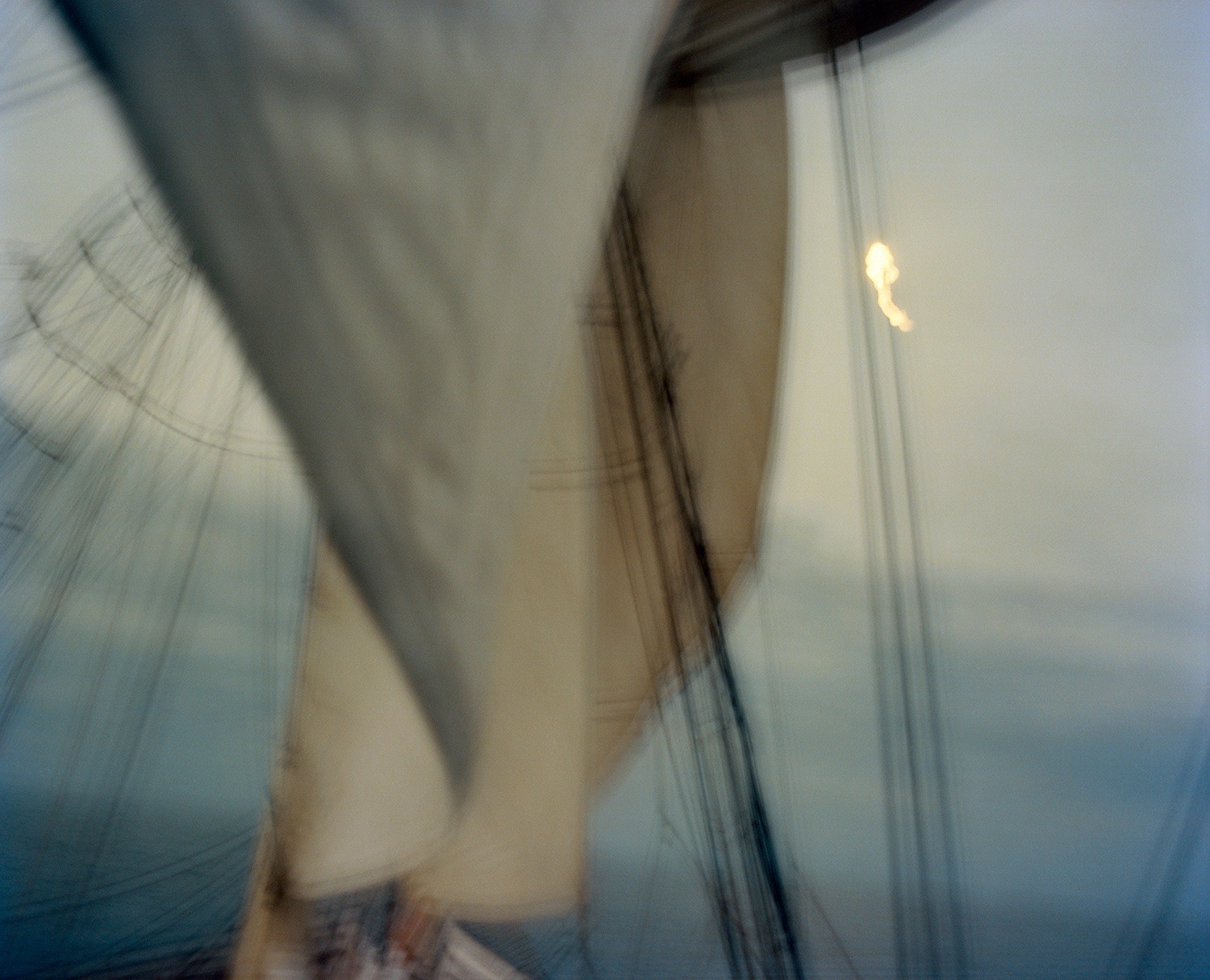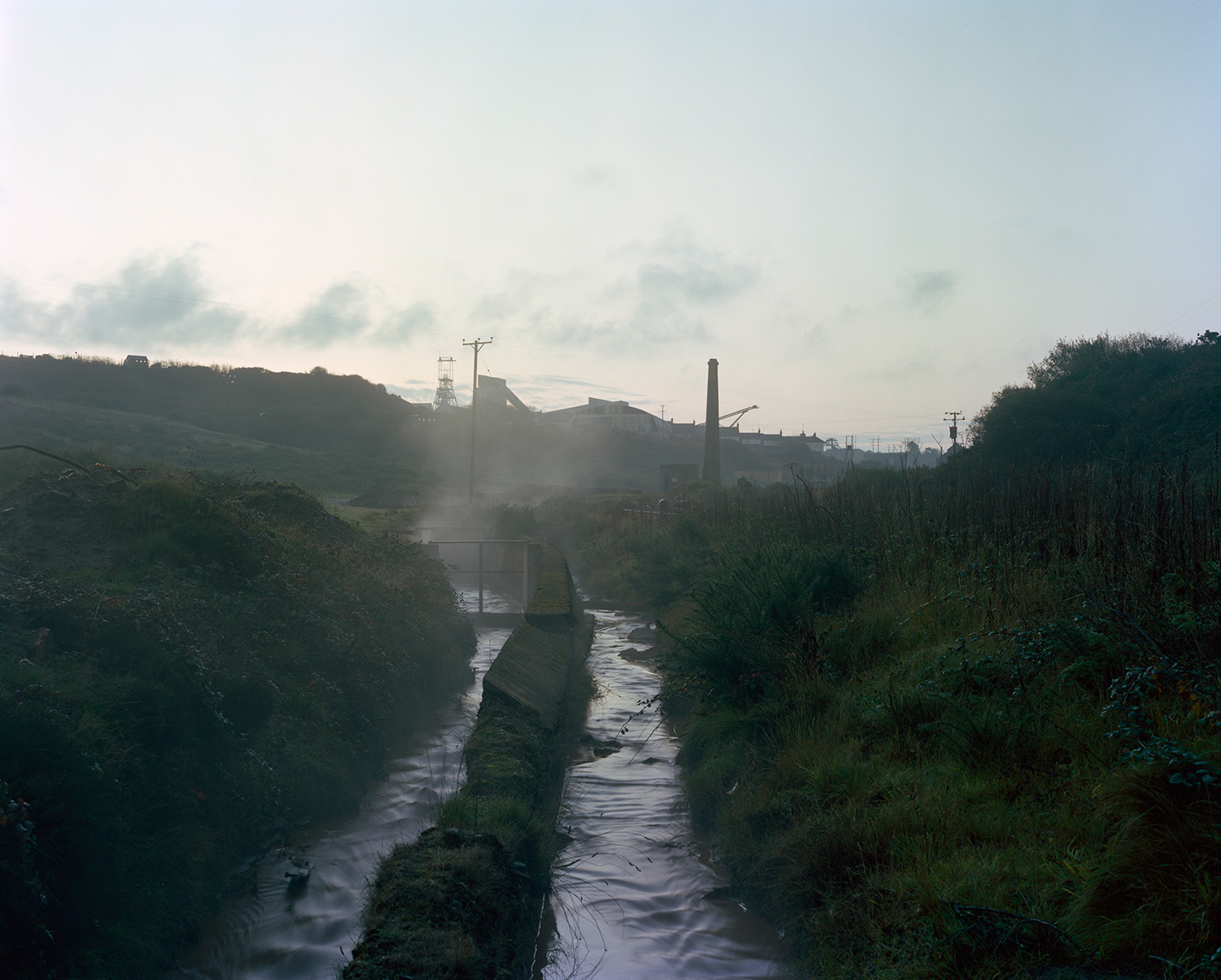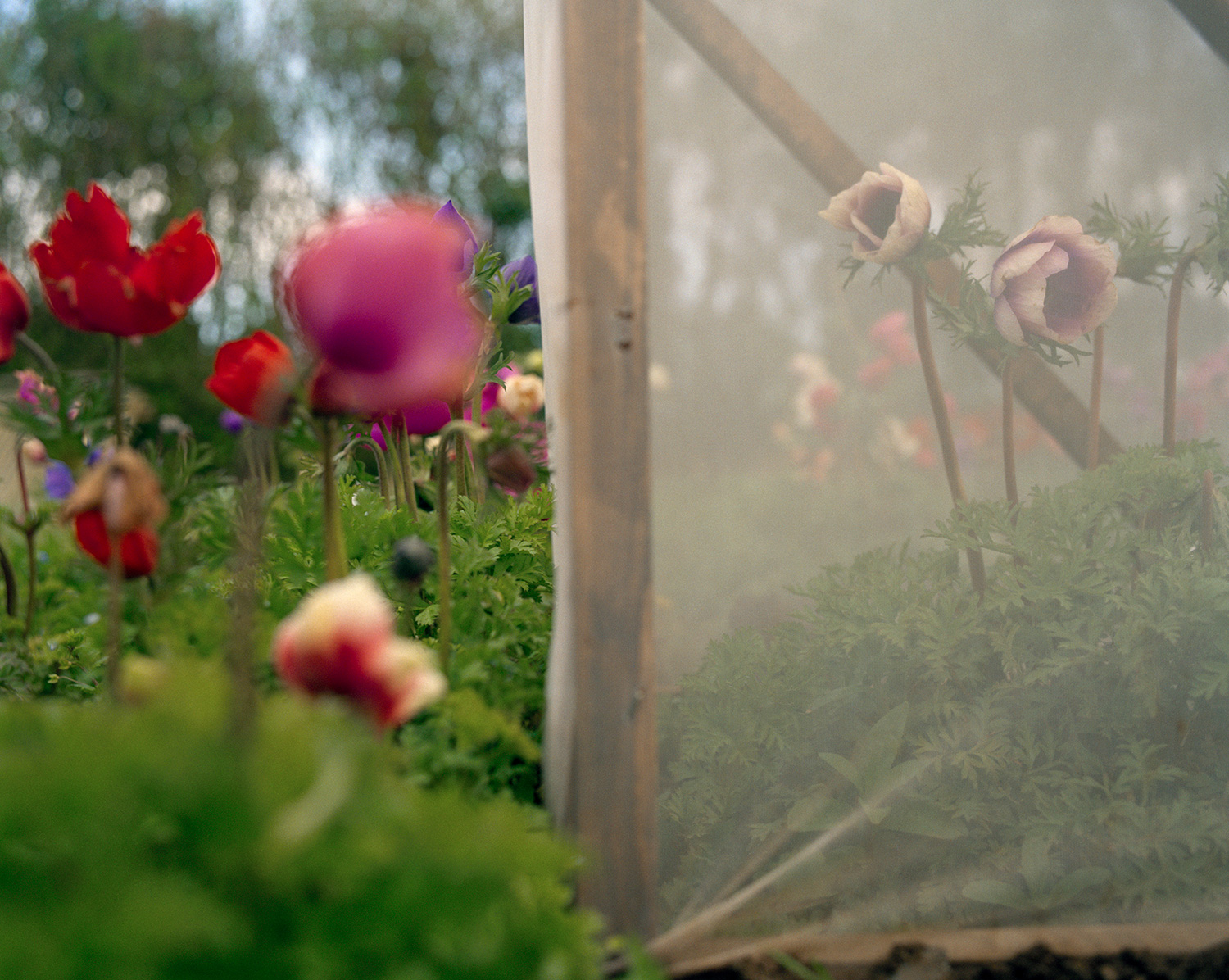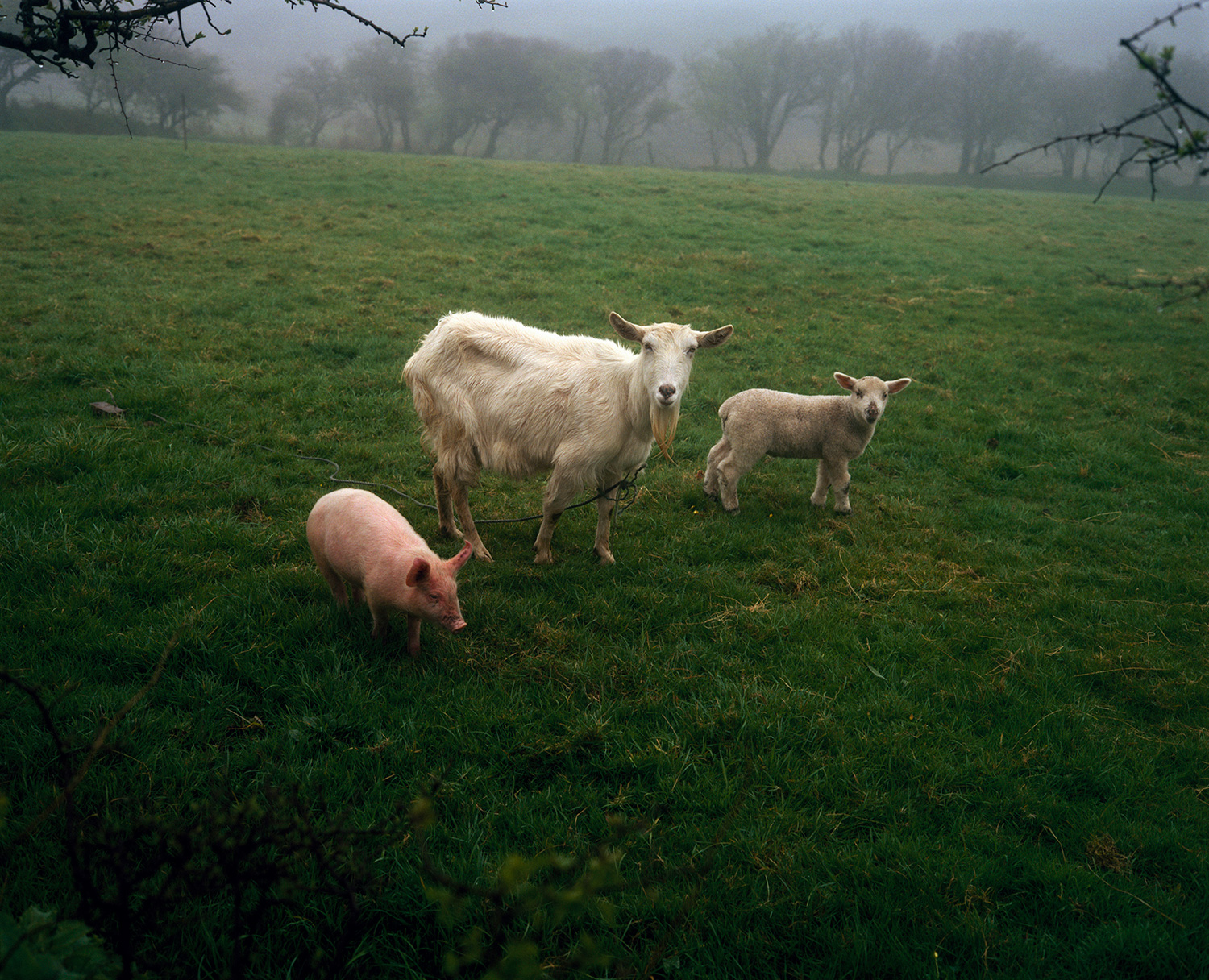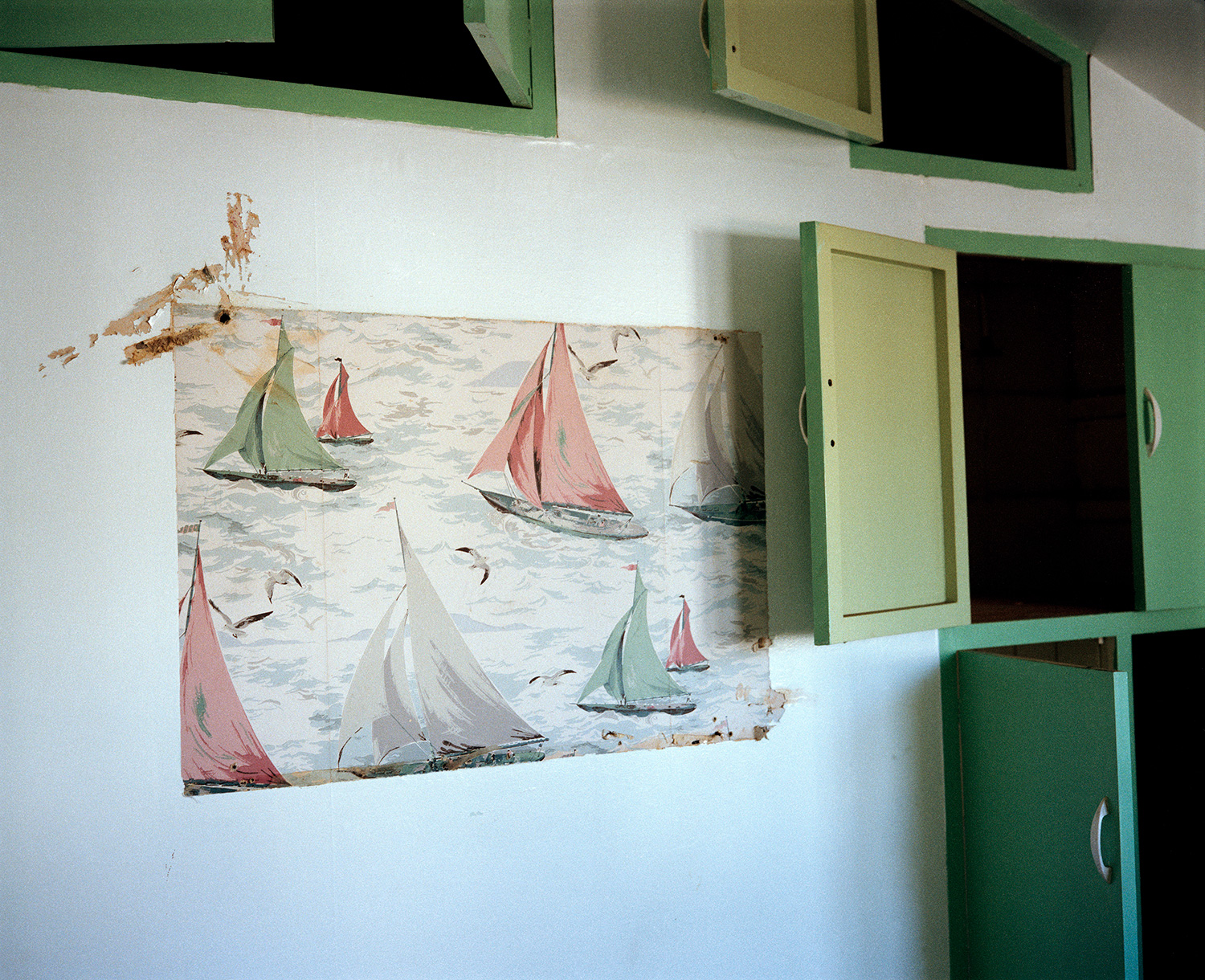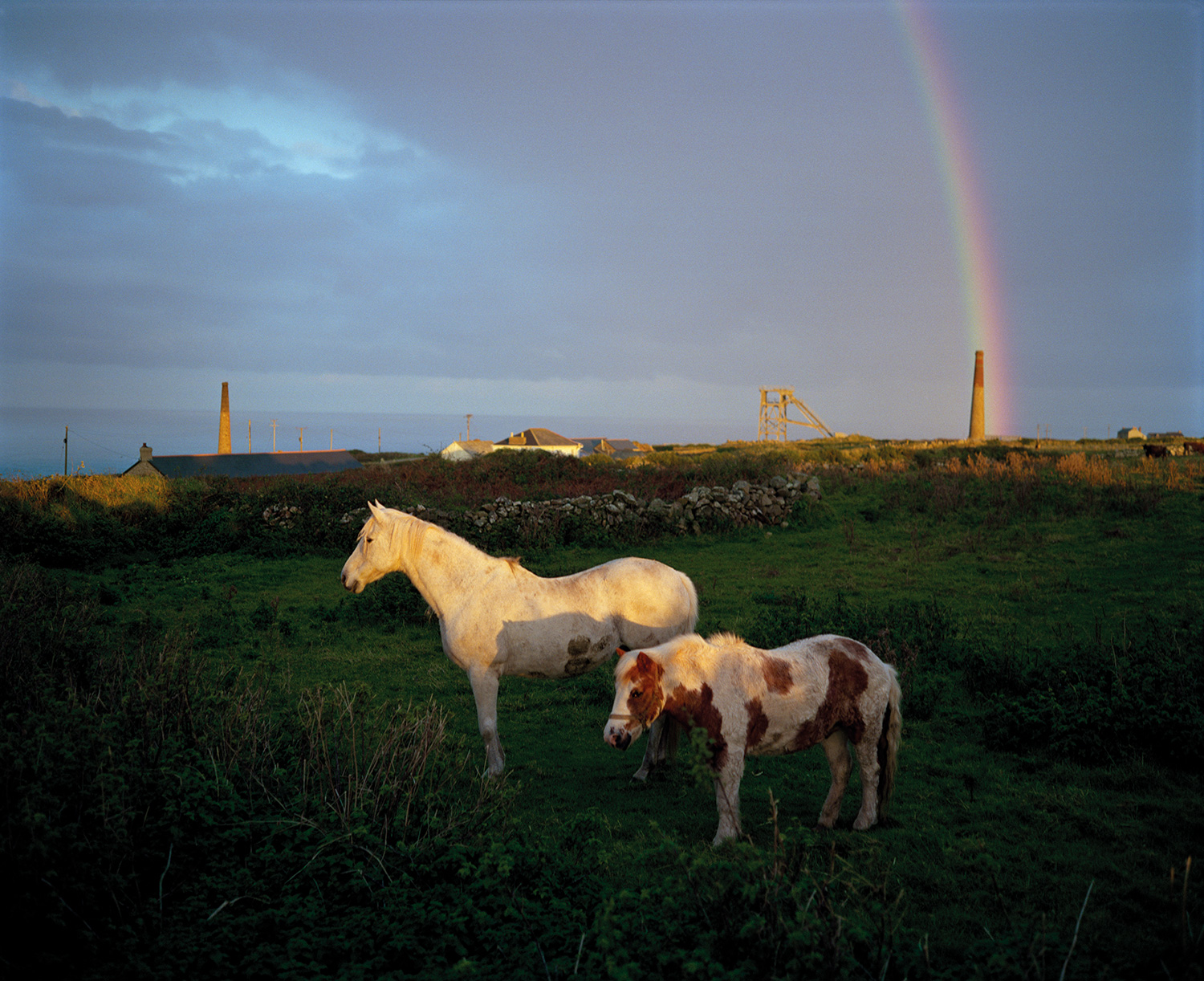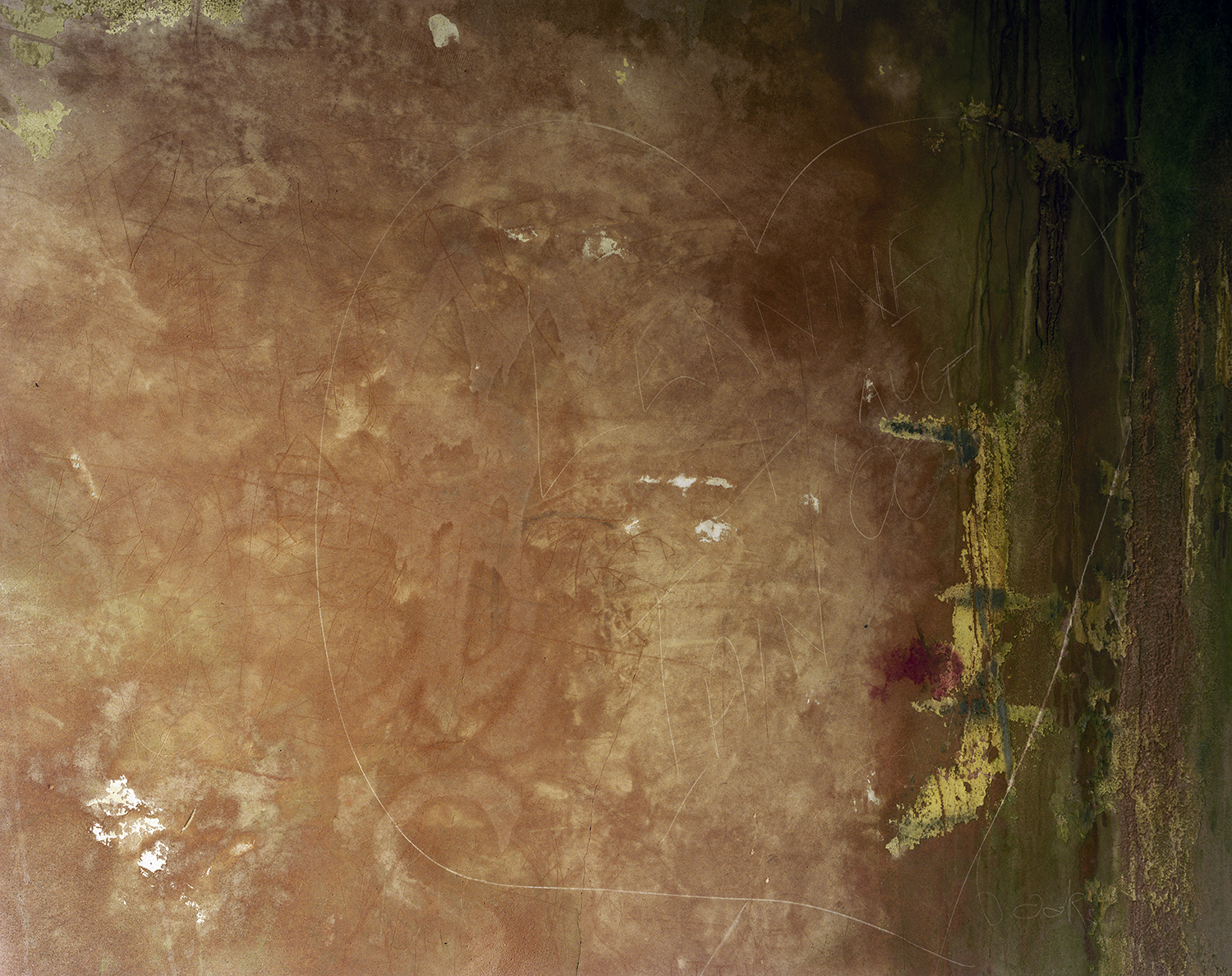Jem Southam is a chronicler of a Southern English landscape. By patiently observing the changes taking place in the land, he embellishes the significance of this alteration in colour photographs, which continually draw our attention to the psychological impact on us of those that came before.
Southam’s newest title The Moth, published by MACK (2018), departs from a meditative black and white photograph of a solitary man on the shoreline whose memory is now awash only with his past. From this starting point, the book heads inwards into the experience of this estranged individual, where we encounter photographs of a once sublime rural landscape, inscriptions, animals and the slow foreboding pull of natural elements.
The tracing of this recollection culminates in the book the same way it began, with an image that evokes a past experience entwined with the history of that place. One which Southam likens to the same experience felt by the Celtic saints and Cornish miners, both exiled from their homelands by their work. Sleep deprived and afloat at sea, their memory like that of the solitary man is guided by the rhythm of the waves. And as the light brings colour to the rigging of the boat, it is as if the men are falling awake out of their thoughts into a new day.
Interview by Cameron Williamson
CW: To begin, could you explain how your past works, such as The Red River and The River Winter differ from this new body of work, The Moth, in your working method and the narrative at play within them?
JS: Each piece of work has its own specific narrative approach and structure, which develops to reflect the ideas and content which arise during its making. One of the main differences of The Moth, is that it has taken three decades to resolve, unlike most other works which evolve over a continuous period of time and thus maintain an arc of coherence. Each work is an adventure though, an act of discovery based on a rambling photographic study of a site.
When I finish a work there is usually a period of a few years hiatus while new directions are explored. I set off deliberately taking pictures in different manners and locations that allow me to push a variety of thoughts around, trying to find a clear focus. The Moth began as a reprise of The Red River, and was one strands of work which opened up in the late 1980’s, however eventually I settled on themes that led to The Raft of Carrots.
After that and through the 1990’s, though I no longer lived in the river valley I continued to visit and to photograph there and other mining districts in West Cornwall, slowly making pictures but having no real ambition initially to make a new work. However, I had the black and white picture of the man standing on the shoreline staring out to sea. This had captivated my imagination, knowing I wanted to try to make a work about what he was thinking. It was always going to be what I have come to call an ‘imagined’ work, a form of fiction, and this kept proving a challenge too far.
Then three years or so ago I broke my arm, so could not photograph, and to keep busy I started trying to organise my archive once more, and while doing that picked up the threads again and found a storyline which seemed relevant and around which a coherent work might be wrought. The final work is an imaginary evocation of the memory of a place, something new for me.
CW: If past works such as The Red River are made through the process of absorbing a site over time, maintaining an arc of coherence, does your new approach with The Moth reflect how, as an artist or participant, our memory of experience and the resulting images are constantly becoming intermingled and referring to each other; in ways that mean the genuine experience is lost somewhere along the way? During your talk at The Photographers’ Gallery in October (2018), you recounted the story behind photographing the sailing yacht, and how the camera mediated this.
JS: I would start off by saying that the memory of the experience is not relevant, so nothing is lost. The pictures come into being through a similar process, repeated walks through the areas in which I make pictures, in this case the mining districts of West Cornwall. Once made they hover around in my imagination and I construct endless groupings of pictures in my mind, trying to find ways to explore different narrative possibilities. The sailing pictures were from one extraordinary night. Having seen the vision of the sails and the moon and the sea I thought I would try to make an exposure, having no idea at all whether anything would register on the film. I ended up exposing about forty 6x7 shots, right through the night until dawn. When I first saw the results I was exhilarated and straight away knew I had a small sequence which would exist as a work in its own right. Having no opportunities to show it, I sat on it until a few years later, I realised the pictures could work within the context of the emerging Moth book. So they will exist as they are in the book but also as an individual work.
CW: There is a sense in your work that a landscape is a collective experience, strongly directed by the palimpsest left by those before us; one in which your image of a rural landscape plays an important role.
I came across a pond in the South Downs very similar to one in your image Ditchling Beacon, Dew Pond 1999. The previous encounter with your image made years earlier meant that my experience of the pond was guided by how I had seen this shape before, and affected how it worked as a photographic subject matter at the time.
Do you consciously refer to particular histories ingrained across a landscape in a body of work, or do you feel this is something largely out of your control?
JS: The palimpsest goes back tens of thousands of years. As the first answer would suggest, I am interested in how the line of human relationships with the earth, right back to our earliest ancestors, is somehow part of the way we navigate psychologically the landscapes we encounter. One of the histories in this work is that of those who have left their homeland to cross seas and oceans (Cornish miners for example), and for whom the memory of home, of what they have left behind, what they have lost, is recycled endlessly in their minds.
There is also in The Moth, as in The Red River, a wonder at the nature of the damaged land of a heavily mined district, and at how the legacy of hundreds of years of exhaustive physical mining activity is the backdrop to the lives of those frequently struggling to maintain reasonable life.
Like many these days I see work like this as allegorical. It’s storytelling, it has a basis in a lived world, but the narrative floats away from the specifics.
CW: Do you find literature to be a productive way for navigating how your imagery is formed into a work and eventually how it is understood by an audience?
JS: I read quite a bit and very eclectically, usually half a dozen books scattered about the house at one time. So at the moment down here is a slightly academic / documentary book about Otzi The Ice Man, and Ovid’s Metamorphoses and a catalogue on Chinese Painting. In the bedroom various books about and of Haiku, which I am coming back to getting absorbed in after a 30 year hiatus, Ali Smith’s Winter, Andrew Marr’s 20th Century History of Britain. Top floor in the studio / study, bird books and a contemporary Italian crime book which documents how politics, crime and the church are all so intermingled.
It all feeds in and importantly it is not programmatic. How so is more problematic though, as one strand that has run through the last four to five years is the interest in how the world of our early ancestors impacts on the contemporary mind and imagination.
I rarely am capable of sustaining a research pattern or plan, always digressing.
I do not get ideas for form or structure from literature, it is more storytelling as a long term human activity, how stories are told, though that is with the spoken word.
CW: I’m drawn to images of animals in The Moth, causing me to revisit something that John Berger said in About Time (1985), around the idea of animals as an unbroken presence outlasting the herdsman. What is the significance of animals in the book to you? In relation to the protagonist in the work, who do you posit to be in a state of loss, experiencing a recollection of a homeland?
JS: One of the things which I find satisfying about working is when one is surprised by what happens. I never set out to take pictures of animals, they appear around a corner or over a hedge when I am out walking and sometimes when I photograph them an extraordinary exchange takes place. A few pictures set off associations deep in our minds which have been laid down eons ago in our early common ancestry. The creatures loom out of the past in an almost shamanistic manner. I am taken back to biblical times, even further to Lascaux and beyond.
In a number of these pictures the animal is looking at the viewer and I am fascinated by this exchange. There is an intelligence we will never comprehend in the gaze of an animal, be it a bird or a goat or a horse, a wildness way beyond our understanding, if we could enter their minds it would seem almost a form of madness.
And yet they are mostly domesticated beasts, so when they look at us with whatever intelligence they have, inside that often doleful look, is a sense that they feel the injustice of the relationship but are resigned to their lot.
In The Moth, most of the animals are caged or tethered. This I use metaphorically to suggest how we too are bound by Fate. The central protagonist of the story, the figure on the beach at the beginning, is thinking back over his life and what has been lost and how Fate has intervened and constrained his own history, and he shares this condition with the animals pictured.
CW: Within the book, there are many images or walls and surfaces that are dressed intentionally or haphazardly in scribbles of text and painted imagery slowly fading away. A rural scene emerges several times, one which is framed by the marks of Cornish miners that measure a certain history across the landscape. You mentioned your interest in the world of our ancestors impacting how we navigate a landscape in the mind. What are your thoughts on the human need to signal a presence, to mark a passage of time, and the relation of this to photography and a loss of memory?
JS: The walls and the graffiti are again found but not looked for. It is strange to me how this happens over a period of time when making a work. I recall that some time after completing The Raft of Carrots, I looked through the book and saw that were about six or seven images of raft-like objects, I was amazed, how had this motif worked its way into my pictures? How had my imagination fixed on this without my consciously realising it? The same has happened with the wall pictures in The Moth. The scratched or incised marks somehow suggest a person shouting out to the world that does not listen or hear. They are the faint echo of a presence of a life. “I was once here”, but no one notices, no one bothers, there is a sense of desperation within them.
As to the loss of memory. This idea came from conversations with my brother who lived in a nursing home for fifteen or so years after a stroke. Slowly his memory faded over many years. When I went to see him each week I would try to find things to talk about and all he could really recall was our lives long ago when we were young, so that’s how we passed the time. There were many events and people from these times which he could not recall and when this happened he would stare past me while trying to search through his mind for recollections, but they had gone, and I could see that he realised that he had lost them, it was haunting. This is what gave me the idea which after thirty years of trying finally pulled the work together and gave it its heart.
The Moth is available to purchase from the publisher, MACK.



